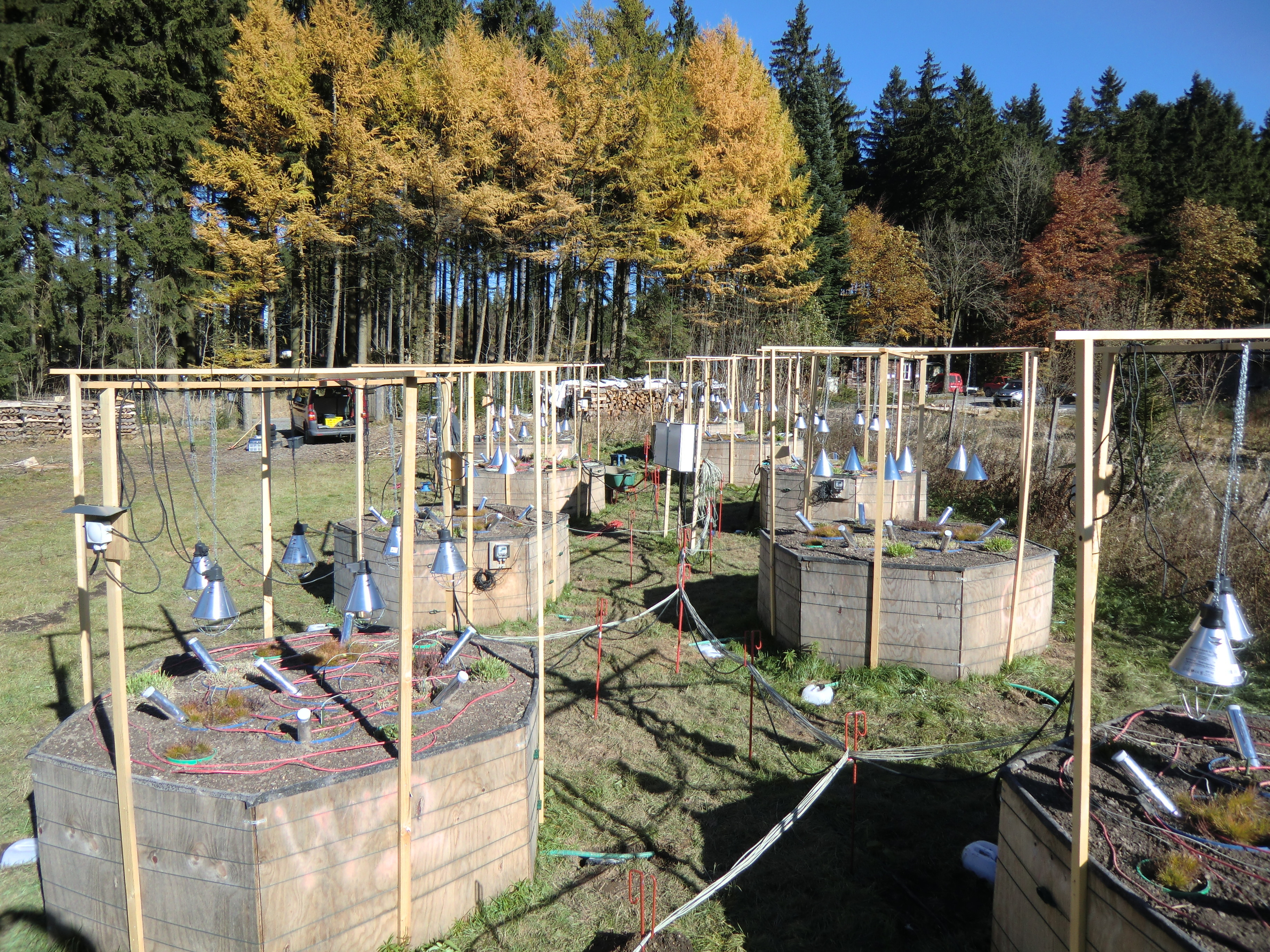EVENT 4
Links to publications and pictures of EVENT 4
Ongoing global warming is expected to increase the recurrence of soil freeze-thaw cycles (FTC) in cool-temperate and other high-latitude regions due to decreases in snow cover and increased variability of air temperature in winter. FTC currently occur in more than half of the land surface of the northern hemisphere, therefore it is important to explore the ecological implications of their altered regimes due to climate change.
Knowledge of FTC effects on plant communities is scarce, although plants may be the decisive factor in controlling ecosystem functions such as nutrient retention. Evidence suggests that FTC alter plant productivity, carbon allocation and competition between plant species. Changes in productivity may potentially result in an altered shoot-to-root ratio and shifts in timing are capable of altering ecosystem stability and ecosystem services, such as nutrient retention. Changes in the occurrence of FTC can therefore alter vegetation composition and species distributions. Nutrient cycling is altered via physical disruption and changes in microbial activity, leading to nutrient leaching and trace gas loss. These processes indirectly affect human interests (e.g. primary productivity, drinking water quality, or greenhouse gas emissions).
 |
| EVENT 4: Experimental Site Waldstein |
Within this project, we want to analyze the effects of intensified FTC in winter for the aboveand below-ground biomass production of two common vegetation types, grassland and heath, in a controlled field experiment in Central Europe. We are particularly interested in exploring the mechanisms and processes behind observed effects of FTC on plants addressing nitrogen nutrition, photosynthetic activity, root injury, and biotic interactions such as plant competition and root mycorrhization. Finally, we want to assess the longevity of the observed effects of FTC on ecosystem functioning over several growing seasons and discuss implications for plant distribution in future climate of the temperate zone.

